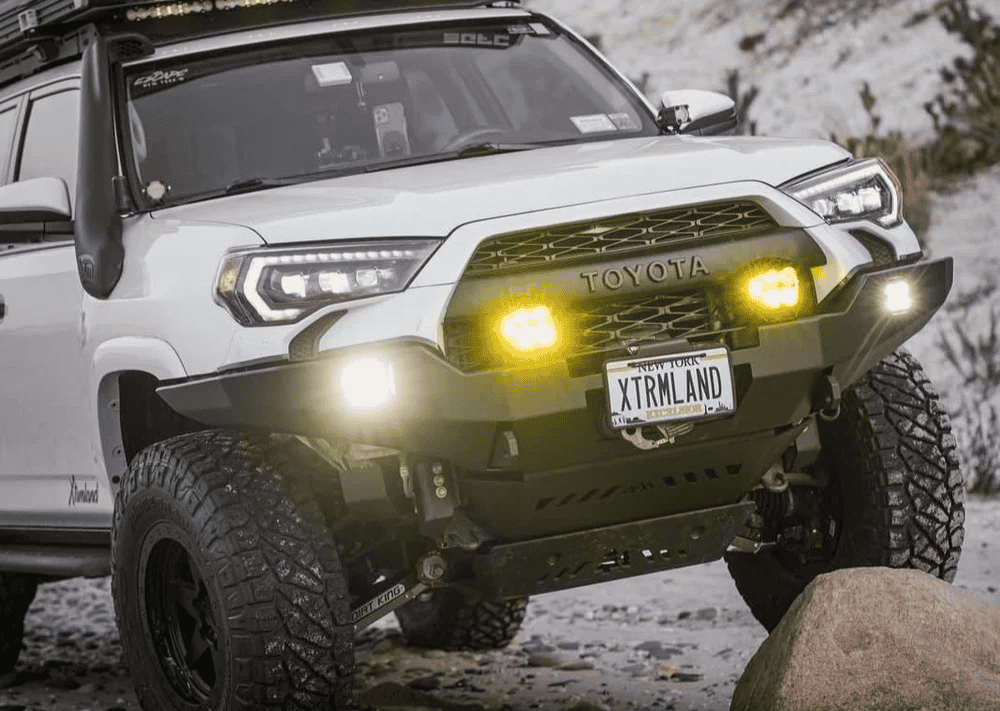Overland Vehicles

A stuck vehicle is a puzzle of forces, angles, and traction. When the trail turns muddy or the snowpack hides ruts, fast access to the right tools keeps a minor delay from turning into a long night. A well built recovery gear bag organizes those tools, protects them from weather, and makes it easy to stage a clean, safe pull. The goal is simple: the right item, at the right moment, in the right condition.
Your bag lives in dust, rain, snow, and baking sun, so materials matter. Look for thick, tightly woven fabric with reinforced seams, a tough base that resists punctures, and handles that do not dig into your hands when the load gets heavy. Good bags stand upright when open, have rigid sides that hold shape, and keep each category of kit in its own space. A great off road recovery bag also has drainage for wet straps and labels you can read in low light.
A huge bag that buries gear is slower than a compact layout with smart dividers. Choose a size that matches your kit and vehicle payload. Place heavy items at the bottom and closest to your spine when carrying by hand. Group soft shackles, tree savers, and kinetic ropes away from sharp edges. Dedicate a pocket for inspection tags and a small log to note dates and any damage found after a pull. If you prefer fast visual sorting, clear top pouches for soft goods help you see what is inside.
Recovery starts with assessment. Confirm a solid anchor, check the line path, remove bystanders from the danger zone, and establish hand signals or radio calls. Use a damper on tensioned lines, especially with synthetic rope. Keep strap angles shallow to reduce side loads and never exceed the working load limit of any component. After the pull, rinse mud and grit from straps and ropes, hang them to dry out of direct sun, and log any nicks or glazing. A clean, dry recovery bag prevents mildew and preserves strength.
Repack in the same order every time so muscle memory kicks in. Replace worn gloves, retire any strap with cut fibers, and wipe down metal hardware. Fold ropes and straps consistently to avoid twists that slow your next setup. The few minutes you spend resetting the kit now will save time and stress on the next trail day.
A smart recovery system does not slide around the cargo area. Tie down points, quick grab mounts, and fire resistant compartments keep gear secure and easy to reach. Many drivers park the recovery bag near the rear door for direct access without unloading other cargo. If your rig has a winch, carry a matching line extension, a second damper, and a dedicated tool sleeve near the front to speed staging.
For drivers building a purpose ready setup, integrated storage and mounts can transform daily use. See Overland rigs built for you to understand platform options that prioritize safe gear access. If your vehicle is already set up but needs thoughtful upgrades, explore Custom overland upfit options to add secure tie downs, mount points, and lighting for night recoveries. Curious how we approach durability and layout decisions across builds? Visit Why choose OZK Customs for our philosophy and process.
These items fit well in a recovery bag with firm sides and labeled compartments. Whether you call it a recovery gear bag or simply a recovery bag, the layout should support fast sorting in bad weather.
A 4wd recovery gear bag and a 4x4 recovery gear bag describe the same concept, and both should suit your vehicle weight and use case. An off road recovery gear bag for a full size truck needs higher working load limits than one for a compact SUV. If space is tight, consider two smaller bags rather than one large case to split heavy hardware from soft goods. The key is to keep tools dry, visible, and secure from abrasion.
Before your next trip, audit your kit, confirm ratings across every component, and stage your off road recovery bag where it is reachable. Build a pre trip checklist and a simple post recovery reset routine. If you want your system built in with secure mounts, lighting, and labeled storage that matches your rig, OZK Customs can design and install it so your gear is ready when the terrain gets interesting.
Ready to equip your rig with a secure, integrated recovery setup? Tell us about your trails and vehicle. OZK Customs will map storage, mounts, and pro grade gear placement to keep you prepared. Submit the form to start your build plan and get a tailored quote.
ADDRESS:
6159 E Huntsville Rd, Fayetteville, AR 72701
PHONE:
(479) 326-9200
EMAIL:
info@ozkvans.com